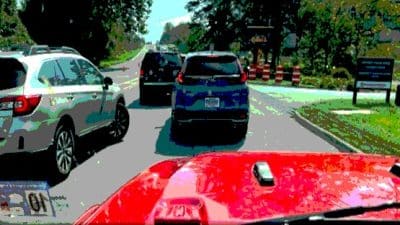
The Virginia Transportation Research Council (VTRC) – the Virginia Department of Transportation’s (VDOT) research arm – is making efforts to decrease these encounters.
After evaluating strategies to reduce deer-vehicle collisions, fences were installed along stretches of Interstate 64 in Albemarle County that are known to have regular wildlife activity. Located on both sides of the road, the fences keep animals from crossing and guide them to underpasses where they can safely get to the other side of the interstate. The full report detailing this strategy can be found online.
There are currently two areas with fencing installed: one at the Ivy interchange near mile marker 114, and another near the bridge that spans the Mechums River at mile marker 110. So far, the mile-long segments of fencing have been successful in diverting deer away from the road. “There have been no deer crashes along the first fenced segment in the year and a half since it was constructed,” said VTRC Associate Principal Research Scientist Bridget Donaldson. She also noted there have been no crashes along the second segment in the seven months since it was installed.
VDOT also posts deer advisory messages on its changeable message signs along a 16.7 mile segment of I-64 between Waynesboro and Charlottesville. The messages, which have been used since 2015, are displayed during times when deer are likely to be on the move to raise awareness of possible animal activity. “VRTC found that crashes with deer are significantly lower on days the deer advisories are posted,” Donaldson said.
November is when the highest number of animal collisions occur. In fact, according to the Highway Loss Data Institute (HLDI), insurance claims for animal collisions are more than twice as high in November.
How deer travel
Deer tend to travel in packs so if you spot one, it’s likely that there are more nearby. While any time of day can be active for deer travel, most deer-related accidents occur starting at dusk and during the evening. It’s important to pay special attention from 6-9 p.m.
How to avoid a deer-vehicle collision
- Drive the speed limit or reduce your speed when you see deer-warning signs.
- Watch for deer between dusk and dawn, especially from October through December.
- Use bright headlights when appropriate
- Watch for animal eyes illuminated by headlights
- Maintain control of your vehicle when you see a deer – to avoid veering into oncoming traffic or off the road.
- Always wear your seat belt
If you hit a deer, contact law enforcement in the jurisdiction where the crash occurred. If the animal is dead, you can keep the carcass after you have reported the accident, and an officer has seen the animal and provided a certificate of possession.










